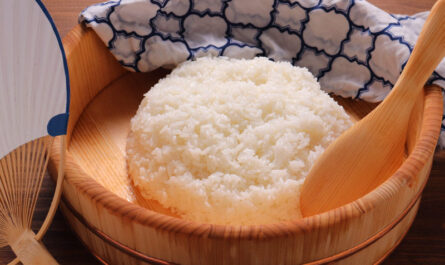Cooking sushi rice to perfection can be an art that sushi lovers aim to master. Many think traditional methods are the only way. However, have you considered the possibilities of oven bake sushi rice? This method simplifies the process and ensures perfectly cooked rice with less hassle. In this article, we will explore this innovative approach, offering insights and tips for all culinary enthusiasts.

What is Sushi Rice?
Sushi rice is a key component of sushi dishes. Its traditionally prepared with white, short-grain Japanese rice, then seasoned with a special vinegar mixture. This rice has a sticky texture, making it perfect for sticking to other sushi components. Understanding its traditional preparation can enhance your modern take on this culinary staple.
Traditional Methods vs. Oven Baking
The Traditional Way
Traditionally, sushi rice is cooked by boiling on the stove or using a rice cooker. This method involves rinsing the rice thoroughly to remove excess starch, which is crucial for achieving the right texture. You might like reading about rice press instructions for another step in perfect rice preparation.
Why Choose Oven Baking?
The oven baking method offers consistency and ease. No constant monitoring is needed, and you can focus on preparing other ingredients. This technique is especially beneficial for beginners or those who want to multitask in the kitchen.
Step-by-Step Guide to Oven Bake Sushi Rice
Gathering Ingredients
Start by gathering short-grain rice, water, rice vinegar, sugar, and salt. Experts suggest checking out types of rice to determine the best choice for your dish.
The Preparation Process
Initially, rinse the rice under cold water until the water runs clear. This step removes excess starch, which is a must for achieving that perfect sticky texture.
Baking the Rice
Preheat your oven to 375F (190C). Add the rinsed rice and water into an oven-safe dish. Cover it tightly with aluminum foil, ensuring no steam escapes. Bake for about 25 minutes. Afterward, remove from the oven and let it sit, covered, to finish cooking with residual heat.
Seasoning the Rice
While the rice bakes, prepare the seasoning by mixing rice vinegar, sugar, and salt until dissolved. Once the rice is ready, gently mix in the seasoning with a rice paddle.
Benefits of Baking Sushi Rice
The primary benefit of this method is the uniformity of the cooking process. It allows for an even distribution of heat, which is paramount for sushi rice perfection. Moreover, this method requires minimal hands-on time, leaving you free to enjoy other sushi preparations.
Potential Challenges
While convenient, there are potential pitfalls, such as the rice becoming too dry if the dish isnt sealed correctly. Ensuring a snug cover helps maintain necessary moisture levels.
Making Your Sushi Roll
Once your sushi rice is ready, use it for sushi rolls by spreading it evenly onto a piece of nori before adding your favorite fillings. You might enjoy learning about setting up sushi for Instagram shots for presentation tips.
Exploring Flavor Variations
Consider experimenting with different vinegar blends or adding ingredients like sesame seeds for a unique twist on the traditional flavor.
Maintenance and Storage
Leftover oven baked sushi rice should be stored in an airtight container in the refrigerator. It remains fresh for several days, allowing for quick sushi-making any time.

FAQs About Oven Baking Sushi Rice
Can any type of rice be used for oven baking?
No, its recommended to use short-grain Japanese rice for authentic sushi rice texture. Refer to short-grain rice tips for additional guidance.
Is it necessary to rinse the rice?
Absolutely, rinsing is essential for removing excess starch, which prevents the rice from becoming gooey.
How do I prevent the rice from drying out?
Ensure the dish is covered tightly with aluminum foil, trapping steam inside and keeping the rice moist.
Thus, embracing the oven bake sushi rice method could transform your sushi-making experience, offering convenience and consistent results. Don’t forget to explore more tools such as sushi tool kits that might enhance your culinary journey.
This article contains affiliate links. We may earn a commission at no extra cost to you.



